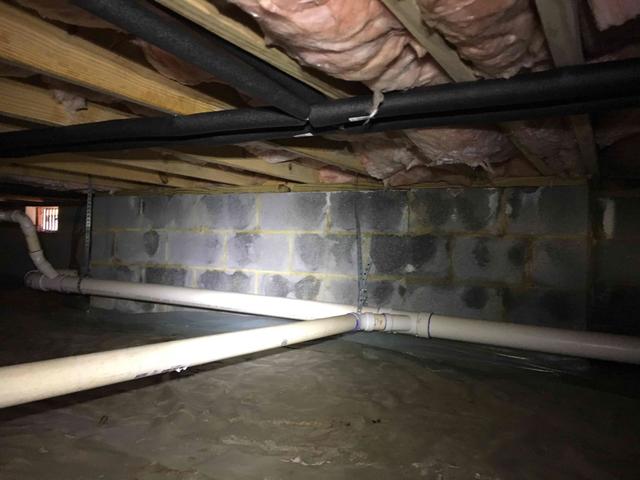Sealing a Crawl Space in West Point, VA
Challenge
This homeowner reached out to us because they had concerns about moisture and mold in their crawl space. At the inspection we found evidence of moisture and water intrusion evidenced by staining on the block walls and droplets as well as dried spots on the existing ground cover. Microbial growth was found on organic material and efflorescence from moisture pulling minerals to the surface of the foundation walls.
At the time of inspection, our meter indicated a Relative Humidity (RH) outside of 54.4%. Inside the crawl space, readings ranged from 66.4% to 71.7%. This tells us that the air being dumped into the crawl space through open vents is allowing the RH to get high enough (Over 60%) that on warm days, microbial growth can occur on organic materials in the crawl space.
Solution
While we recommended a full encapsulation with dehumidifier and insulation on the foundation walls to control the relative humidity and keep the crawl space dry all the time. However, the homeowner decided they wanted to do the project in stages. They chose to remove the old vapor barrier and any debris on the ground. We then installed a 10-mil vapor barrier, overlapping and sealing all seams as well as running it up the walls 2 inches below the sill plate and sealed to the foundation. In addition, all vents and penetrations through the foundation wall were blocked and sealed, and the sill plate was sealed to the foundation to reduce the amount of air carrying moisture from entering the crawl space.
At this time, they chose to keep the fiberglass insulation in the floors and not insulate from the crawl space walls. We then installed a SaniDry Sedona Dehumidifier along with a wireless hygrometer that allows the homeowner to monitor the relative humidity in their crawl space from inside the home.







